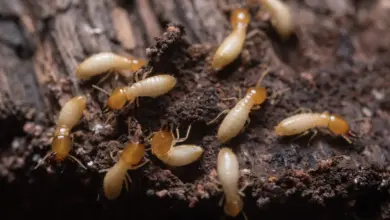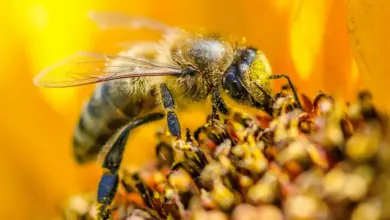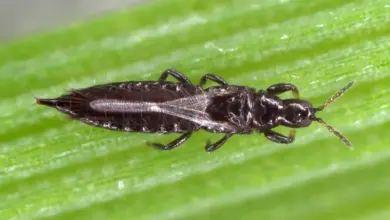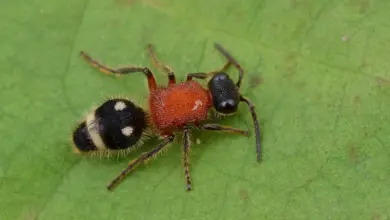Have you ever noticed tiny insects that jump when you try to kill them? Chances are, you might have encountered springtails. Springtails are fascinating little creatures; these tiny insects are usually between 0.04 and 0.08 inches long and are known for their jumping ability.
Their unique appearance often includes a white, yellowish, or dark gray coloration. What makes them extraordinary is their ability to jump when disturbed, thanks to their forked appendage called furcula. This appendage, located at the rear of their body, helps them leap distances up to 100 mm.
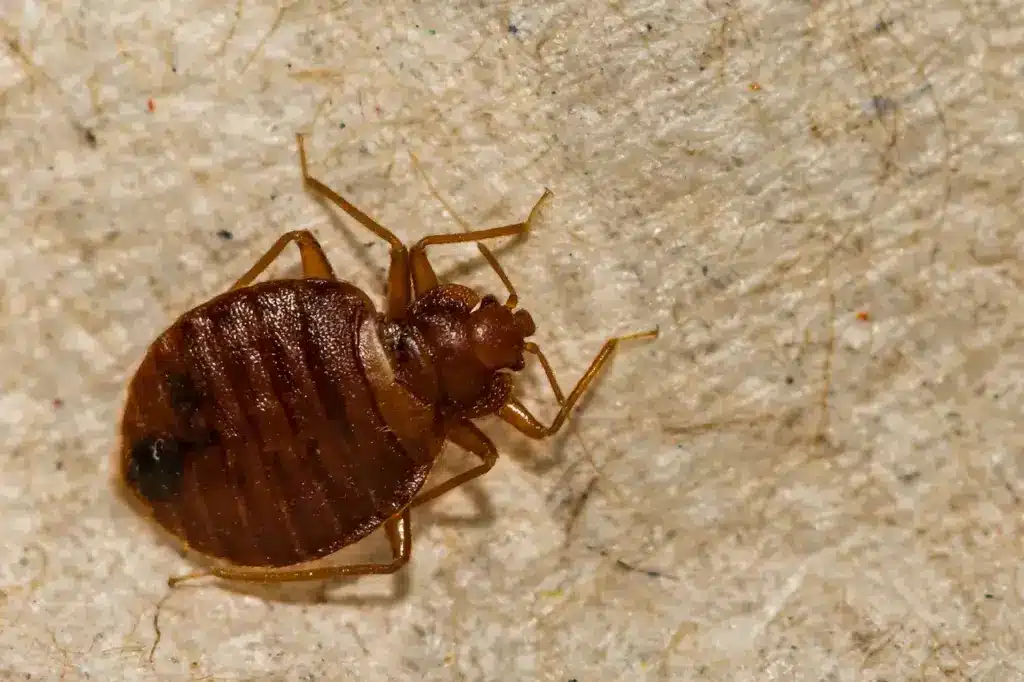
Tiny Bugs That Jump
Springtails are usually harmless, and they primarily feed on algae, fungi, pollen, and decaying organic matter. They prefer moist environments such as soil, decaying wood, and leaf litter. Now that you have a better understanding of these tiny insects, you can easily identify them the next time you see one jump away from you.
Understanding Springtails
Physical Attributes
Springtails are tiny insects, usually measuring between 1/16th and 1/8th inch long. They come in various colors like dark-colored, brown, grey, or black, and some species may even be white or brightly colored. One unique feature of springtails is their furcula, a tail-like appendage on their abdomen. Although they have legs, they don’t have wings and are unable to fly.
Different Species
Springtails are part of the class Collembola, which has thousands of different species including snow fleas. Some examples of springtails are:
- Dark-bodied springtails
- Snow fleas
- Elongate-bodied springtails
Springtail Behavior
These insects are known for their ability to jump when disturbed. The furcula on their abdomen helps them to catapult themselves into the air, making them a nuisance when you try to get rid of them. They usually thrive in damp environments, like leaf litter, rich soil, compost, and mulch, where they feed on fungi and decaying plant materials.
Lifecycle of Springtails
The lifecycle of springtails involves eggs, juveniles, and adults:
- Eggs: Female springtails lay eggs in damp soil or plant debris.
- Juveniles: After hatching, juveniles grow and molt through several developmental stages.
- Adults: Mature springtails might live for several months or even up to a year depending on their environment and food supply.
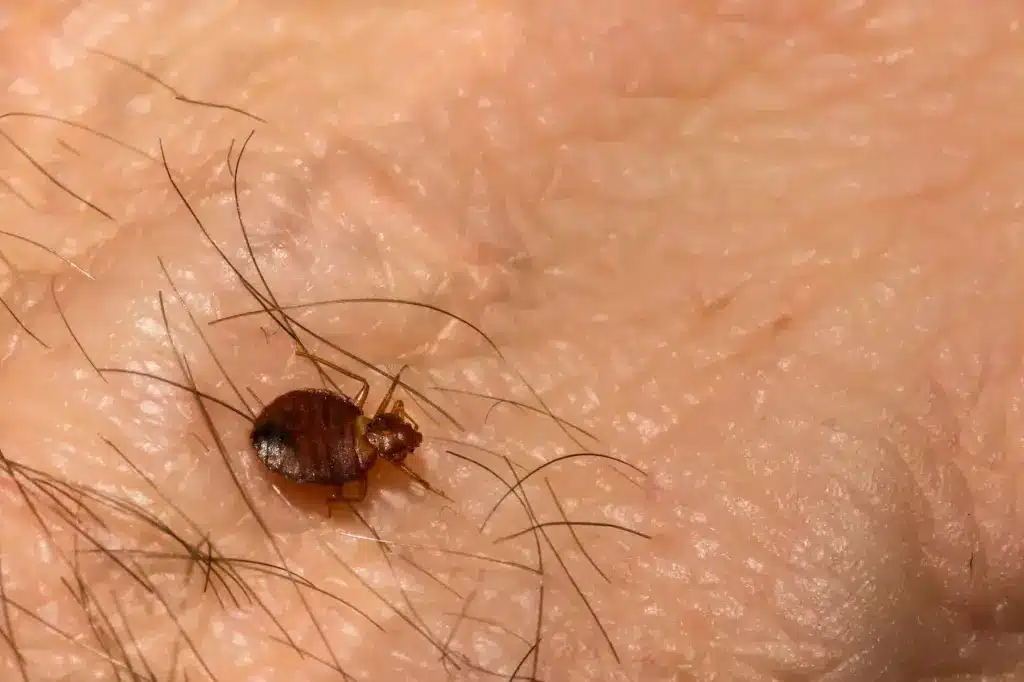
Springtails Vs Other Insects
It’s common to confuse springtails with nuisance insects like fleas or ants. Here is a comparison table to help differentiate:
| Insect | Size | Color | Wings | Jump | Habitat |
|---|---|---|---|---|---|
| Springtails | 1/16″-1/8″ | Various | No | Yes | Damp areas |
| Fleas | 1/16″-1/8″ | Dark brown | No | Yes | Warm-blooded hosts |
| Ants | Varies | Black, brown | Varies | No | Various |
Remember, you might encounter tiny black bugs in your home, but not all of them are springtails. Make sure to inspect their physical attributes and behaviors before trying to eliminate them.
Habitats and Infestation
Indoor Infestation
Sometimes, springtails can infest your home, especially in damp areas like the basement, kitchen, or bathroom. These tiny bugs thrive in humid environments, making their way indoors through pipes, sinks, and windows. Homeowners may notice them near sources of light or around building foundations.
To prevent indoor infestations, it’s essential to:
- Seal gaps around pipes and windows
- Install window screens
- Use a dehumidifier in damp areas
- Keep basements and crawl spaces well-ventilated
Outdoor Infestation
While springtails can be a nuisance indoors, they are a natural part of the outdoor environment. They are commonly found in:
- Mulch and soil
- Gardens and greenhouses
- Leaf litter, logs, and bark
- Plant roots
Outdoors, springtails help break down organic matter and contribute to a healthy ecosystem. However, if their population becomes too high, they may invade your home in search of a more suitable habitat. To reduce the likelihood of an outdoor infestation, consider the following:
- Remove excess mulch, leaves, and debris from your yard
- Maintain a healthy balance of moisture in your garden
- Avoid overwatering plants
Factors Attracting Springtails
Springtails are tiny, wingless insects known for their jumping abilities. These small creatures are often found in moist and humid environments. Let’s discuss some factors that attract springtails.
Moisture and Humidity
High levels of moisture create ideal conditions for springtails to thrive. You might find them in damp places like:
- Wet soil
- Mulch
- Rotted wood
To prevent their presence, fix any sources of leaks and water damage in your home. Reducing humidity can also help keep springtails at bay.
Organic Matter and Fungi
Springtails feed on organic matter, fungi, algae, and mildew. They are particularly attracted to areas with excess organic debris. Clearing away fallen leaves, grass clippings, and decaying wood can discourage their growth.
To reduce the presence of springtails, we recommend:
- Removing excess organic debris from your yard or garden
- Monitoring any mold or mildew growth in your home
- Ensuring your home is well-ventilated and dry
By taking these simple steps, you can create an environment that is less appealing to springtails and maintain a pleasant living space for you and your family.
Springtails Impact on Human Life
Springtails are tiny insects that may cause some concern when you come across them in your home or garden. They tend to jump when disturbed, which is likely to draw your attention.
Do they bite or sting?
For the most part, springtails don’t bite or sting humans. They are primarily scavengers that feed on decaying plant material, fungi, and algae. They are not known to cause damage or pose any danger to humans.
Potential impact on houseplants
Although springtails pose no immediate threat to humans, they may feed on the roots and leaves of houseplants. In small numbers, springtails are generally harmless to plants and may even be beneficial, as they help with the decomposition of organic material in the soil.
Swimming pools
You may also find springtails near or in swimming pools, primarily because they are attracted to moisture. While they don’t pose any risk to you or your pool, their presence may be somewhat annoying.
Pesticides
If you’re looking to get rid of springtails in your home or garden, using pesticides may not be the best option. Instead, focus on controlling their environment by reducing humidity and removing organic material that attracts them.
In summary, springtails might be irritating to encounter, but they generally don’t cause any harm to humans or significant damage to houseplants. By controlling their habitat and moisture levels, you can keep them at bay without resorting to potentially harmful chemicals.
Springtails and Pets
Springtails are tiny, wingless insects that are about 1/16 inch long. They are known for their ability to jump when disturbed, which sometimes leads to confusion with fleas. However, unlike fleas, springtails do not bite humans or pets, nor do they spread disease or damage household furnishings. They are mainly a nuisance by their presence1.
These insects thrive under damp conditions and are commonly found in leaf litter, rich soil, compost, and mulch or plant beds outdoors2. Since they don’t pose a direct threat to your pets, there’s no need to worry about infestations in your home. Nevertheless, maintaining cleanliness and managing damp areas around your living spaces can help prevent large numbers of springtails from appearing.
Here are some tips to keep springtails away:
- Regularly clean up pet bedding and litter.
- Remove damp materials from your home.
- Seal any gaps or cracks that allow moisture to accumulate.
Remember, springtails are harmless to your pets, but keeping your home clean and dry can help maintain a more comfortable environment for both you and your furry friends.
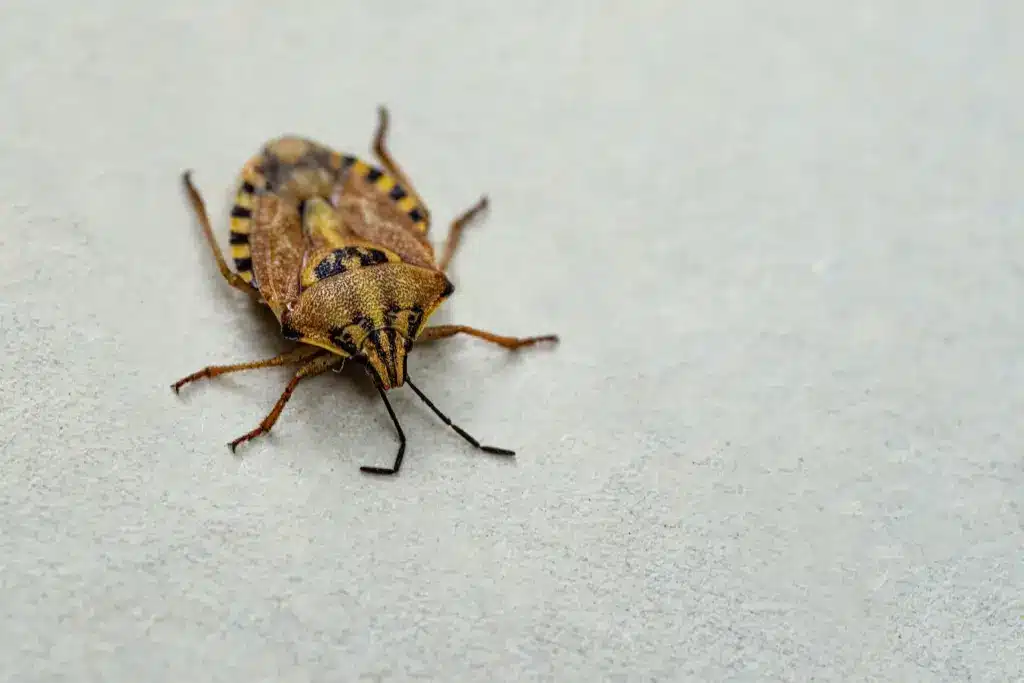
Dealing with Springtails Infestation
Prevention Measures
To prevent a springtails infestation in your home, follow these steps:
- Reduce moisture in your environment by fixing leaks, ensuring proper ventilation, and using dehumidifiers.
- Seal windows and doors to keep these tiny creatures out, using weatherstripping or caulking.
- Eliminate any excess organic matter around your home, as it serves as a food source for springtails.
A well-maintained space will make it difficult for springtails to thrive and reproduce.
Control and Removal Techniques
To control and remove springtails from an infested area, try these methods:
- Vacuuming: Use a vacuum cleaner to remove springtails from surfaces. This will help reduce their numbers and make it easier to manage the infestation.
- Home remedies: Some natural remedies, like diatomaceous earth or vinegar, can be effective in killing springtails. Apply them around the infested area and watch their numbers diminish.
- Pesticides: If the infestation persists, consider using pesticides—but only as a last resort. Be sure to follow the product’s instructions and consult with a professional if needed.
When dealing with springtails, patience and persistence are crucial. Continuous monitoring and maintenance will help keep their numbers in check and prevent future infestations.
When to Seek Professional Help
In some cases, managing a springtail infestation on your own might not be enough. If you’ve tried various methods like avoiding overwatering and letting the soil dry between waterings but still see a significant number of these tiny bugs, it’s time to consider professional help.
A pest control company can offer more advanced solutions and treatments to effectively eliminate the springtails from your home. They are especially helpful in situations where springtails are found in large numbers or are continuously appearing in different areas of your home.
Before you buy any over-the-counter pesticides, keep in mind that they might not be as effective as professional treatments. It’s important to research the available options and consult with experts to avoid risking the health of your household and environment. In addition, an experienced pest management professional can identify underlying issues that contribute to the springtail infestation, potentially preventing future problems.
As you compare pest control companies, remember to:
- Check their credentials and experience in handling springtail infestations.
- Request a customized plan which addresses your specific situation.
- Ask for an estimate to ensure it fits within your budget.
In conclusion, seeking professional help is vital when DIY approaches fail to control springtail infestations. Taking timely action can save you from extensive damage and ensure a healthy living environment for you and your family.
